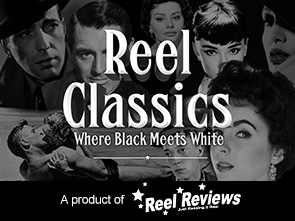{googleAds}
<div style="float:left">
<script type="text/javascript"><!--
google_ad_client = "pub-9764823118029583";
/* 125x125, created 12/10/07 */
google_ad_slot = "8167036710";
google_ad_width = 125;
google_ad_height = 125;
//-->
</script>
<script type="text/javascript"
src="http://pagead2.googlesyndication.com/pagead/show_ads.js">
</script></div>{/googleAds}Rarely does an American filmmaker convey such unwavering faith in his subject, biographical or otherwise—and especially movie-going audiences—than writer-director Todd Haynes (Far From Heaven) does with his Dylan ode, I'm Not There. He shows a vigorous trust that the audience can keep pace with the shifty and shifting Bob Dylan â"personae" gracing the screen in wildly varying physical, racial, and gender incarnations. He has the assurance that audiences will enter this world with pre-ordained wisdom. That they have already lain thanks at the Dylan altar. True or not, Haynes doesn't insult your intelligence.
Dylan's career arcing moods are channeled via the poet, prophet, outlaw, fake, electricity star, rock n' roll martyr, and born-again Christian. With Haynes' careful brushstrokes, these are all one in the same; but all played by different actors that are black and white—child, men, and one gender-bending woman. Marcus Carl Franklin, Christian Bale, Heath Ledger, Ben Whishaw, Richard Gere, and Cate Blanchett—they're all Robert Zimmerman, a.k.a. Bob Dylan.
Before his easel, Haynes dabs a masterful painter's stroke in every color of the palat to create an original and impressionistic portrait of the life and times of folk and political singer-songwriter Bob Dylan. Yet, this film is not a traditional movie biography in the Ray (2004) or Walk the Line (2005) vein, trying to take you inside the artist's universe, inner-circle, head, etc, to stare into the faces of demons. Even those with faint knowledge of Ray Charles and Johnny Cash's career trials and tribulations come away from those Hollywood treatments with a reasonable sense of the strengths and weaknesses of both as entertainers and men.
With Haynes' Dylan, you're safest proceeding with abandon. This isn't an artist exposé. It's far from revealing. You won't learn anything titillating about Dylan, even if you don't know anything about him. It's a pop-culture tour dé force trying to delicately frame a symbolic snapshot of the â"60's generation"—that group's need to express unrest. To speak up and right wrongs. To protest—civil rights, women's liberation, the Vietnam War. For baby-boomers—above all, those that came of age in the 1960's—the symbol of their dissatisfaction and angst was—is—Bob Dylan.
With a predominate Dylan soundtrack that effectively employs the performer's lesser known songs, and alternating black & white and color cinematography, Haynes uses non-linear intersecting storylines to fuse these seven â"historical fiction" characters—all of whom go by names other than Dylan—that illustrate the many lives of American popular music's most legendary rolling stone.
Director Haynes' film is startling original in its effortless amalgamations of Dylan's personae, and most pleasantly inspired in its casting and performances. The eleven-year-old Dylan â"personality"—introduced in 1959 and named Woody Guthrie (Marcus Carl Franklin)—sings about depression-era boxcars and economic hardships. This represents the childhood background that Dylan admittedly fabricated when he arrived in NYC in 1961.
Without a doubt, the casting coup for any film made in 2007—or perhaps any movie of the past decade—is Blanchett as the â"electric Dylan," Jude Quinn (when the musician dramatically went from acoustic folksinger to plugged-in electric guitar-playing howler). In a deserved Oscar-nominated best supporting actress turn, Blanchett embodies the mid-1960s Dylan—dark sunglasses and bushy hair, at odds with his betrayed-feeling folk audience (â"Judas!"), and always looking to scratch a generation's uneasy itch. Little did we know five decades later that Dylan would become the standard bearer for American Idol reinvention. Blanchett is the only Dylan persona that intentionally looks and sounds like the performer. And, like Jamie Foxx's Ray Charles, she imbues Dylan's poetic spirit. He is she, and she he. A restless popular culture icon saying something soothing to an unsettled generation with something to say.
DVD Details:
Screen Formats: 2.35:1
Subtitles: English; Spanish
Language and Sound: English: Dolby Digital 5.1
Other Features: Color; interactive menus; scene access; "Trailer Gallery," "From the Edit Room," "Look Back" and "Dylanography.
* Commentary
o Feature-length commentary track with director Todd Haynes
* Featurettes
o On-screen Lyric Guide
o Text-based essays
o Haynes conversational Q&A
o Making-of about the soundtrack
o Red Carpet Premier
o Dylanography - comprehensive Dylan performance encyclopedia
* Deleted Scenes
* Outtakes
* Audition Reel
* Previews
* Photo Stills
Number of Discs: 2 with Keepcase Packaging
{pgomakase}





























